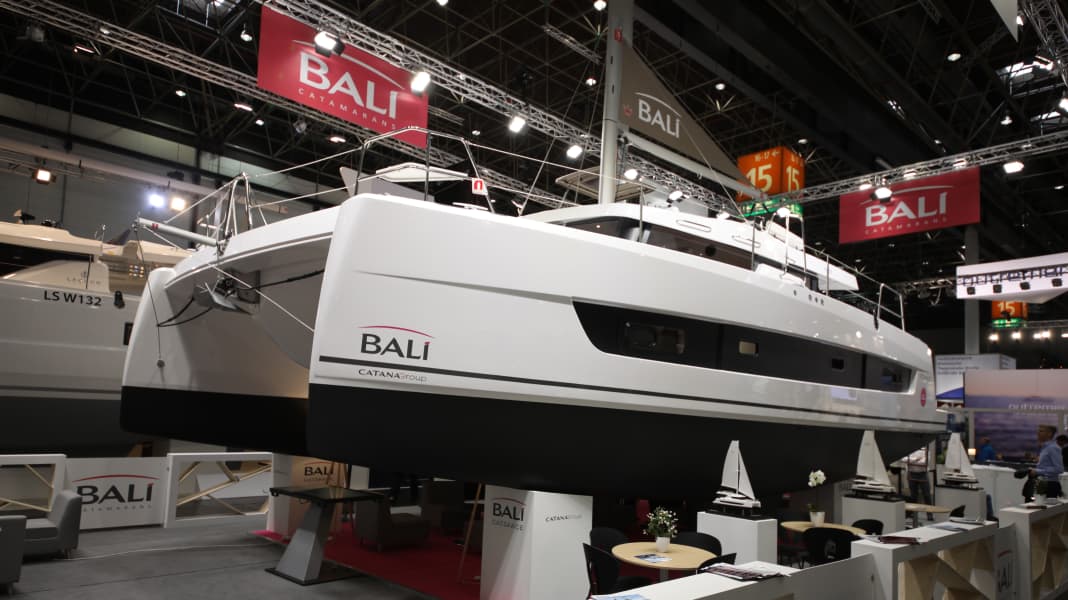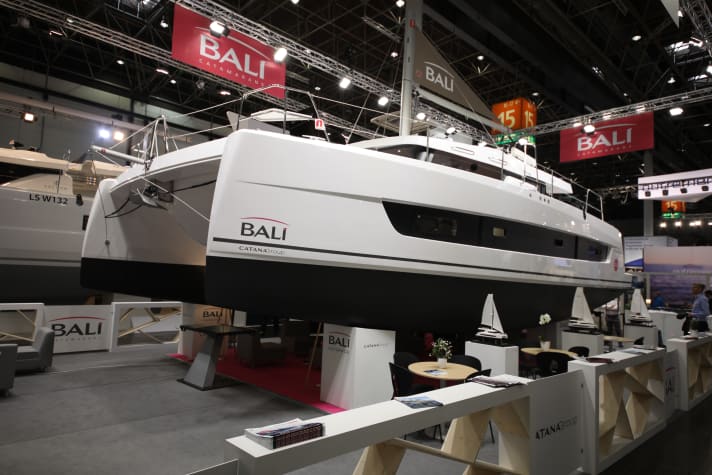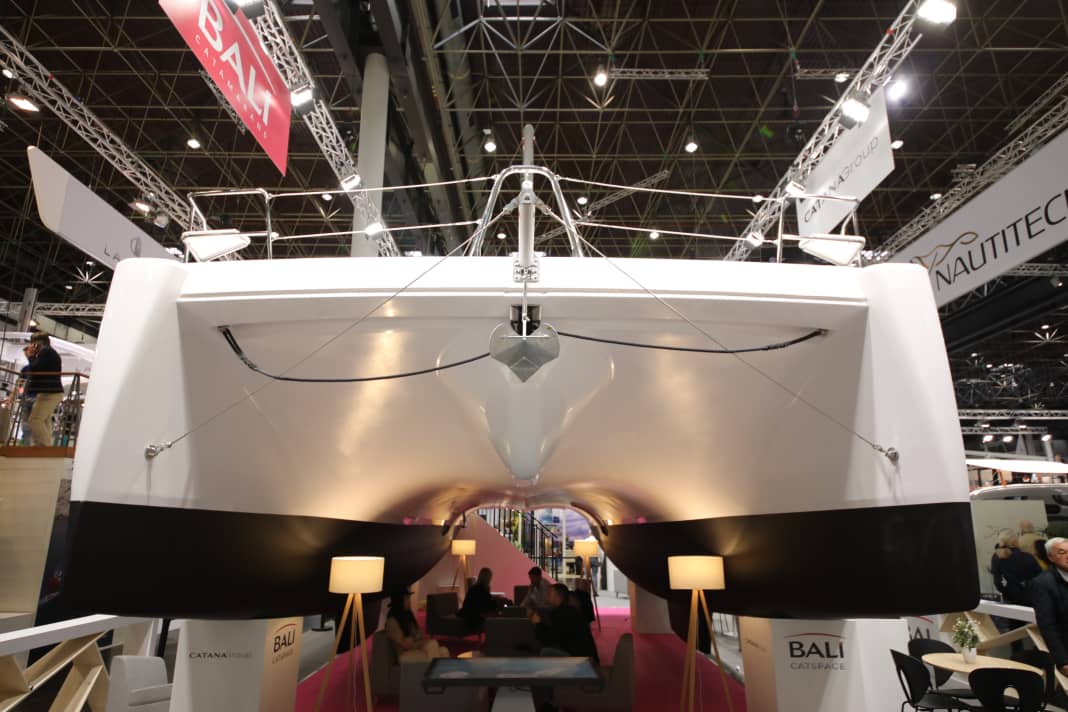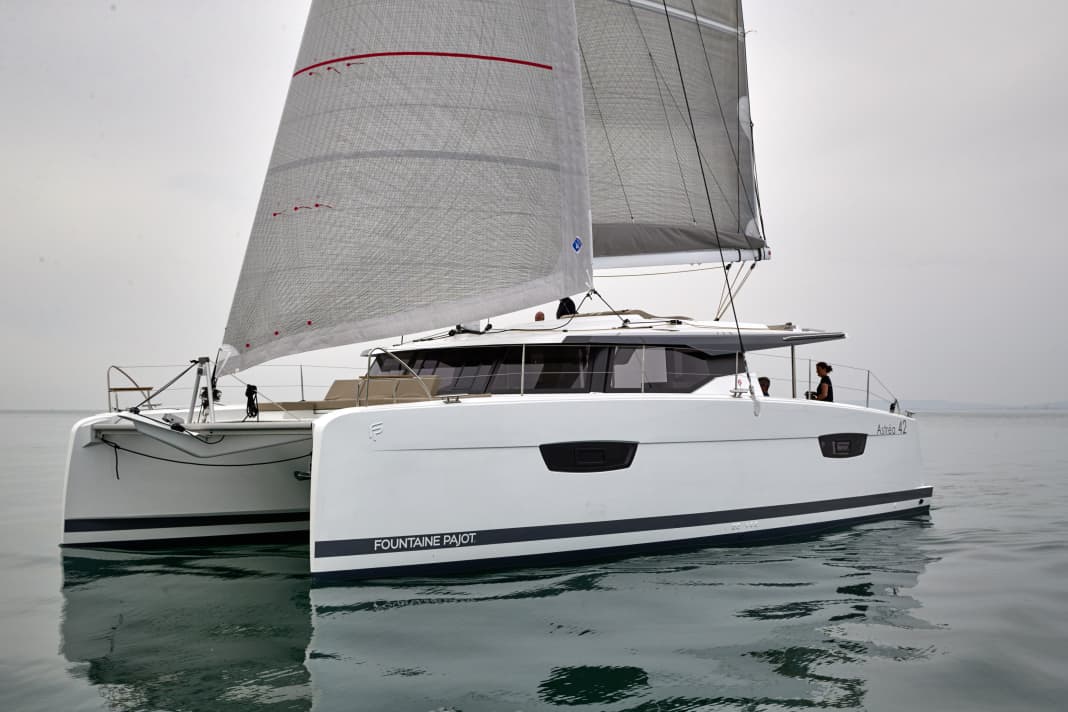
In the range of large series cruising cats, Bali occupies the segment of boats that are clearly optimised for living comfort: It is the only 40-foot cat on the market with a complete flybridge on the saloon roof, two sunbathing areas and seating groups, one on the foredeck and one above, and a fixed laminate connection at the front instead of nets between the hulls.

The comfort line from the French shipyard, which is part of Catana, focuses on optimising living space, and it is no secret in the charter industry that the Balis sacrifice sailing performance for this. To compensate for this, there are clever features that once again mark a unique position. For example, by dispensing with a fixed saloon wall with windscreen and sliding door aft. Instead, there is a solid GRP moulded section that can be folded under the roof using a clever swivel mechanism. When we tried it out, it worked perfectly, even though the part is quite heavy.






Result: In warm areas, the saloon can be almost completely opened up by folding up the rear and sliding open the two large windows on the sides. This creates a huge saloon area that offers a spaciousness and ventilation that is probably unrivalled. When the hatch is closed, a stable, solid deckhouse is created, which offers more protection in bad weather without having to attach any tarpaulin pieces or having them flap in the wind and the crew can only guess what is going on outside through scratched foil windows.
As the name "Catspace" suggests, the utilisation of space on the boat is the order of the day - for example, by extending the front cockpit to the bow. This creates a sunbathing area with a seating area, which is now arranged the other way round compared to the similarly sized Bali 4.1 model: the sunbathing area now adjoins the saloon window first, followed by a seating area. This makes it easier to work at anchor. Another new feature is that the saloon window can no longer be lowered vertically; it is now a classic hatch that swivels upwards. If guests are lying there, you have to be considerate.
The anchor windlass is completely concealed in a box and the chain disappears into a practically inaccessible compartment - not exactly ideal if something gets wedged in there. But the living space at the front is enormous, and the solid construction creates a second cockpit equivalent to the normal aft deck. Ideal at anchor and when large crews are travelling, such as on a berth charter. This means that the crew is never crammed into too little space.

The foredeck also allows the shipyard to gain additional volume within the hull structure so that the forward double cabins can be installed transversely to the direction of travel - a first, as this option is only available on conventional catamarans with a hull length of at least 14 metres. What's more, thanks to the additional space, an additional single berth can be accommodated in the forward cabins if required, increasing the number of possible sleeping berths on board to a total of ten. However, the extendable berth is not very wide and less than 1.90 metres long. It is likely to be used primarily by couples with children; younger children are well accommodated there. Of course, the Bali Catspace can also be converted into a three-cabin model with a large owner's cabin, large bathroom and separate shower area, but the four-cabin version is available in Düsseldorf. It is a pity that the beds have been rounded off at the foot end for design reasons. This may make it easier to get in and out, and it looks more elegant, but there is a noticeable loss of legroom.

Each compartment has its own bathroom, while the rather simple galley scores points with a huge, normal refrigerator, as we know it from the kitchen at home. This also has two freezer compartments as standard; solar panels on the deck help to power them. A new feature that is sure to find its fans is an outdoor grill at the end of the saloon on the starboard side. In terms of living space, the cat really does set standards, which is also helped by the flybridge: The skipper has a small but functional helm station with all the controls, behind which is a further sunbathing area for two to three people. The helm station can be accessed from both sides via two stairways.
In terms of sail technology, the Bali has a somewhat reduced appearance: The boom is set very high because of the flybridge, and there is no traveller on rails; two attached mainsheets are the not quite equivalent replacement. The headsail is a self-tacking jib, a trend among cruising catsails.
If you take a spin around the cat on display in Hall 15, Stand B43, you will notice that it differs from the Bali 4.1 in other ways. The two bow sections are clearly flattened, appear to have been cut off and give the boat a very beefy "face". Aft, it is noticeable that the propellers are positioned far aft behind the rudder blades. This makes it easier for the prop to catch a mooring line when manoeuvring in the harbour.
Sailors who value two-legged boats above all for their generous living space should take a look at the Bali, which could set new standards in the small cat class in terms of space utilisation.
For comparison:













